Climbing rope, known for its strength and vibrant colors, is finding a new life beyond the crags. Designers are embracing this durable material, transforming it into functional and aesthetically pleasing objects for the home. From lighting to furniture, the possibilities are as endless as a climber’s ambition.
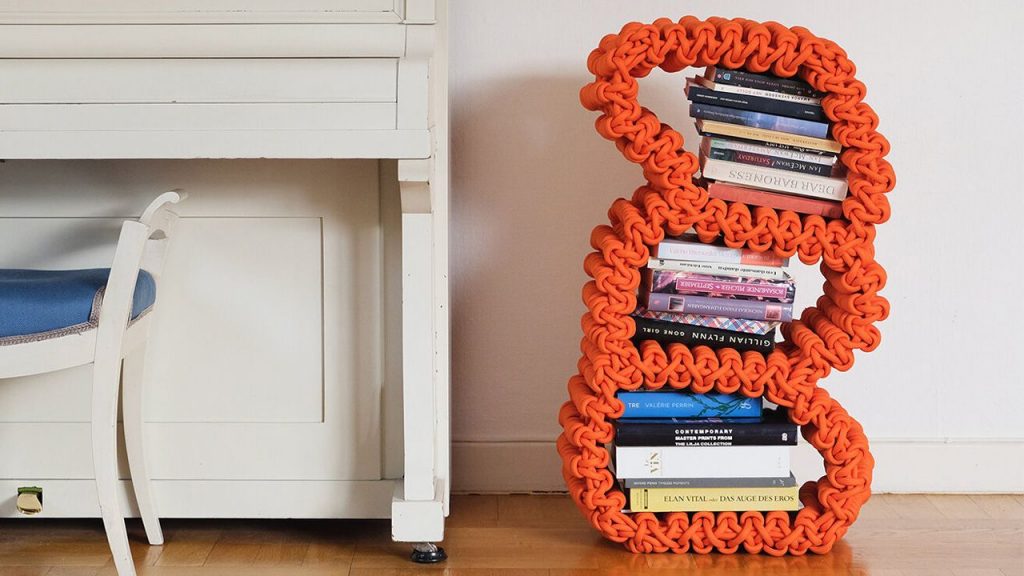
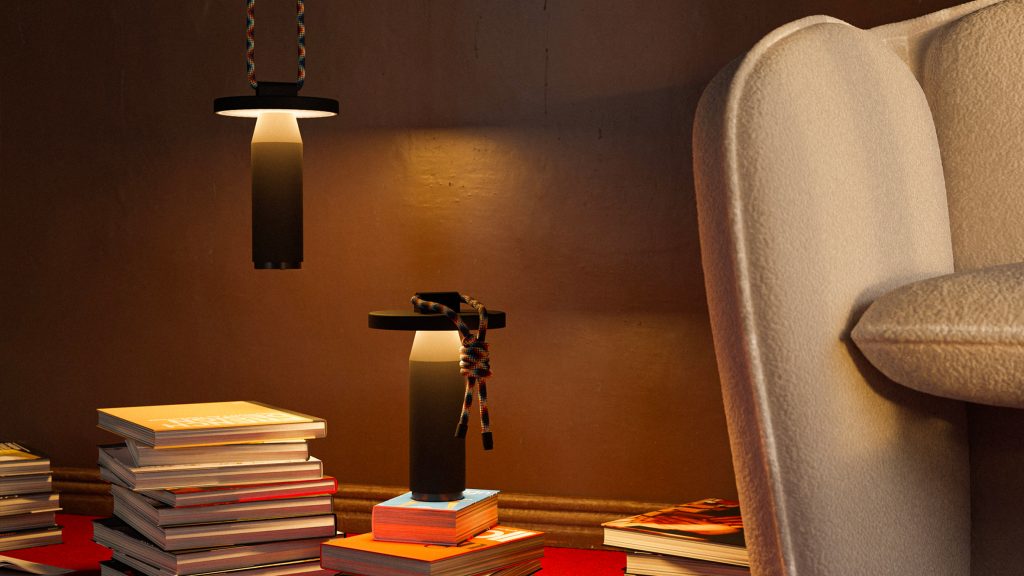
Quasar by Samy Rio
First up, the Quasar wireless portable outdoor lamp, designed by French designer Samy Rio for Petite Friture. What sets Quasar apart, besides its durable aluminum construction and long battery life, is its climbing rope-inspired strap. Rio incorporates a five-meter-long woven rope attached to the top, transforming the lamp into a truly nomadic piece. This multi-colored strap, reminiscent of the ropes used by climbers, makes it easy to carry, hang, or secure the lamp wherever needed.
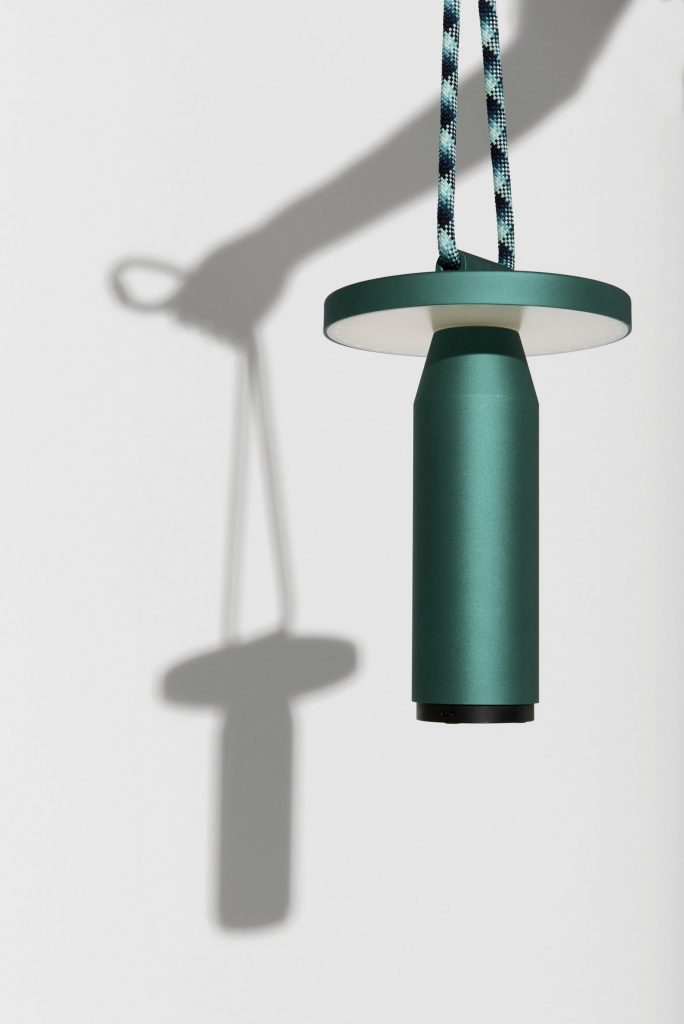
Quasar by Samy Rio
The rope isn’t just a functional element; it’s a design statement. Available in five vibrant colors, including emerald and olive green, the Quasar lamp is named after bright astronomical objects, reflecting its luminous quality. The woven rope adds a touch of playful ruggedness to the lamp’s sleek design, creating a visual contrast that’s both eye-catching and practical. The design’s focus on repairability and recyclability further aligns with the eco-conscious spirit of repurposing.
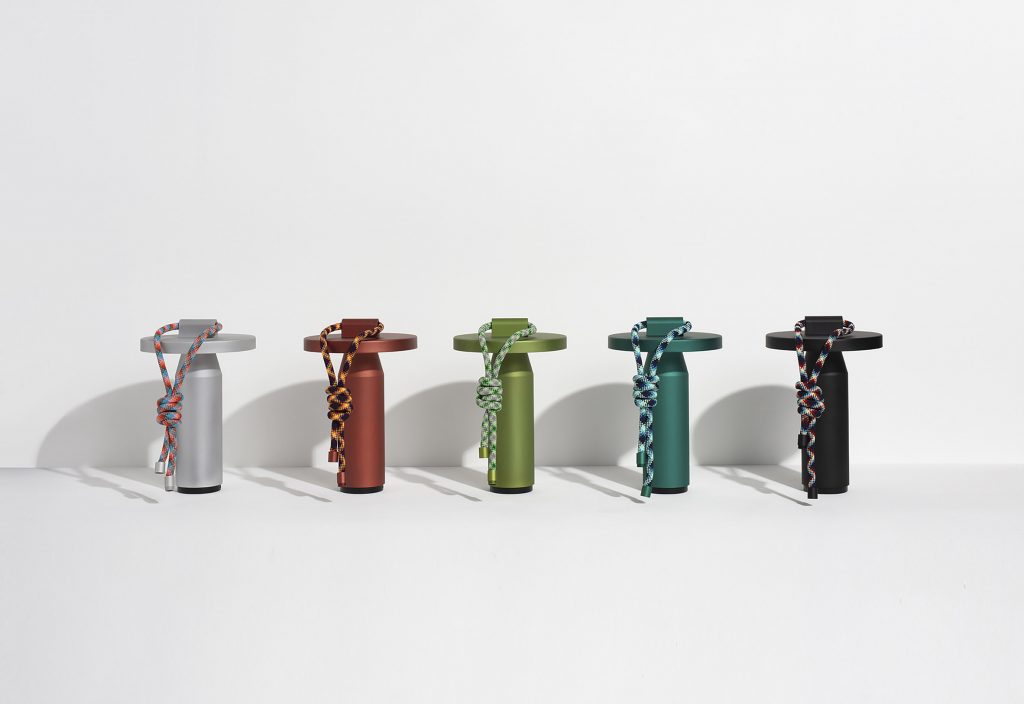
Quasar by Samy Rio
Quasar demonstrates how a material associated with adventure and the outdoors can be reinterpreted for everyday use. The climbing rope-inspired strap adds a unique touch to a functional object, making it a conversation starter and a reminder of the versatility of repurposed materials.
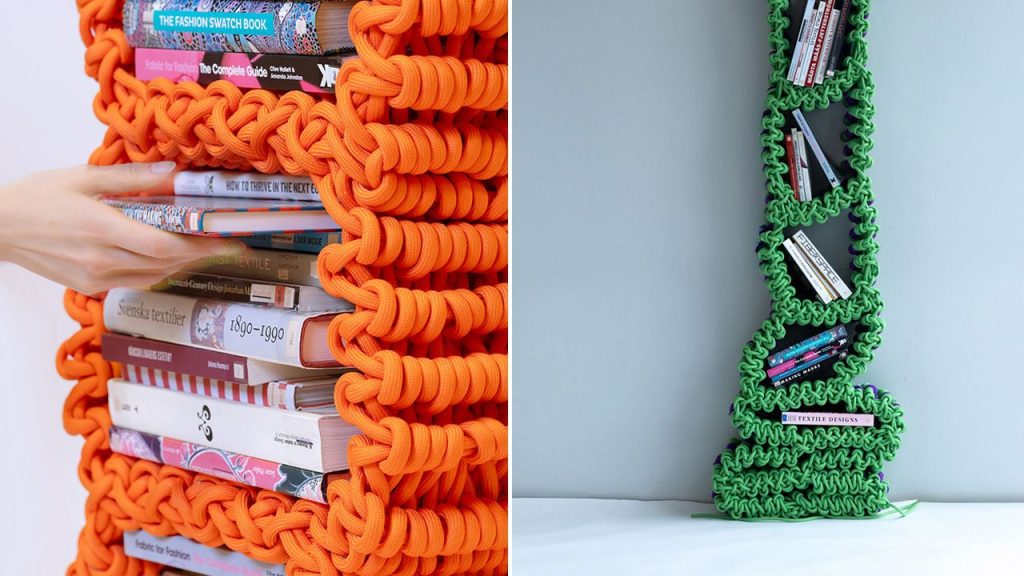
Entwined Objects by Kryss
The second story takes us to Sweden, where Kryss, founded by designer Svea Tisell in 2025, is pushing the boundaries of material innovation with reclaimed climbing rope. Kryss’ Entwined Objects project showcases the potential of a single material – rope – to transform into self-supporting furniture using a revolutionary technique called Multiweave. This project emphasizes adaptability, material efficiency, and a deep commitment to functional design.
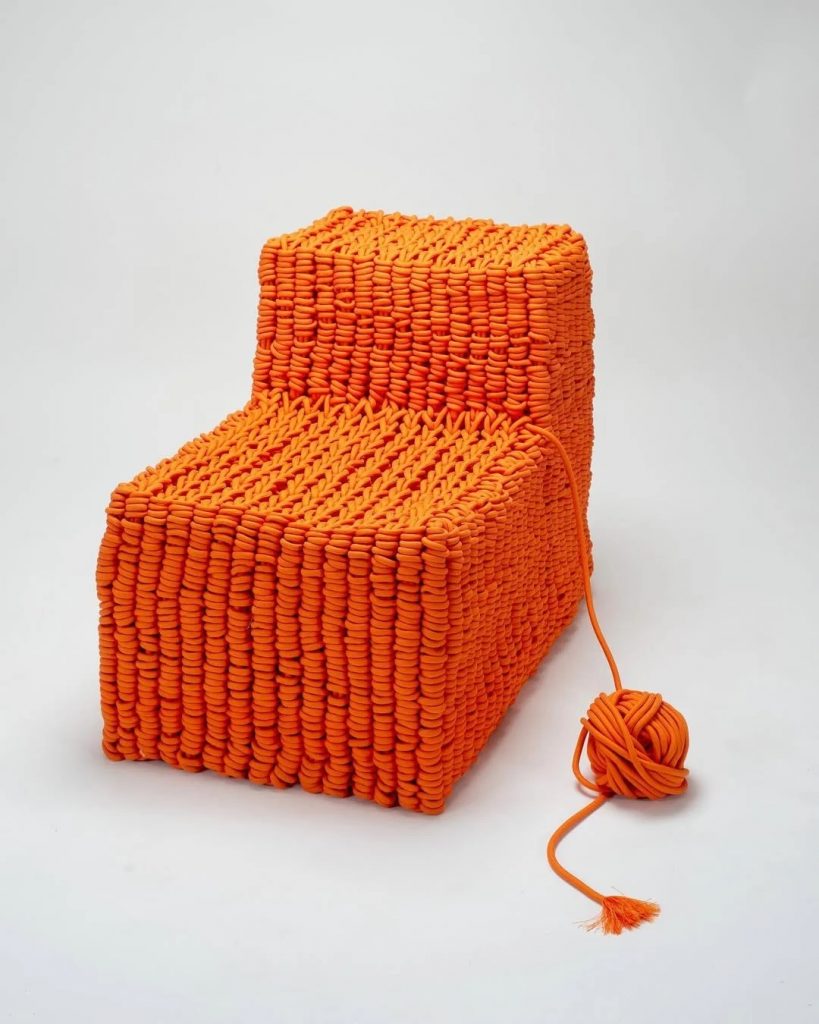
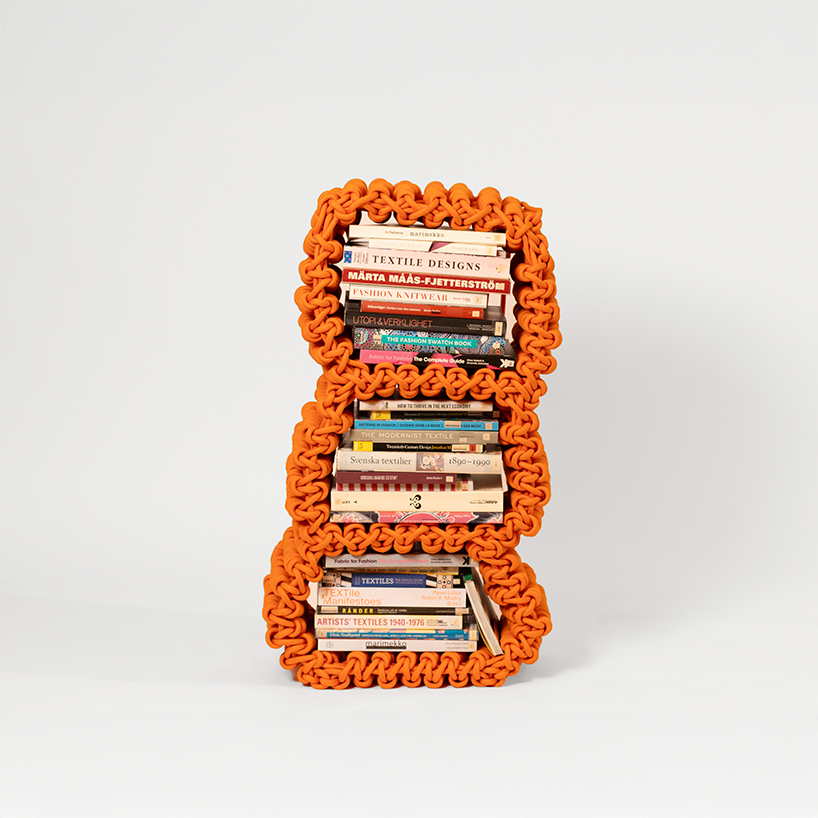
Entwined Objects by Kryss
Multiweave is a three-dimensional weaving method that allows rope to form rigid, freestanding structures without the need for additional framing. Inspired by the intricate tension of knots, Kryss pieces respond to weight and movement, subtly adjusting to their environment. Each piece begins with a single rope, sourced from either reclaimed climbing materials or surplus shoelace production, resulting in a mono-material construction that is fully recyclable. This circular approach ensures that at the end of its lifecycle, the structure can be undone simply by untying the finishing knot, allowing the rope to be repurposed once again.
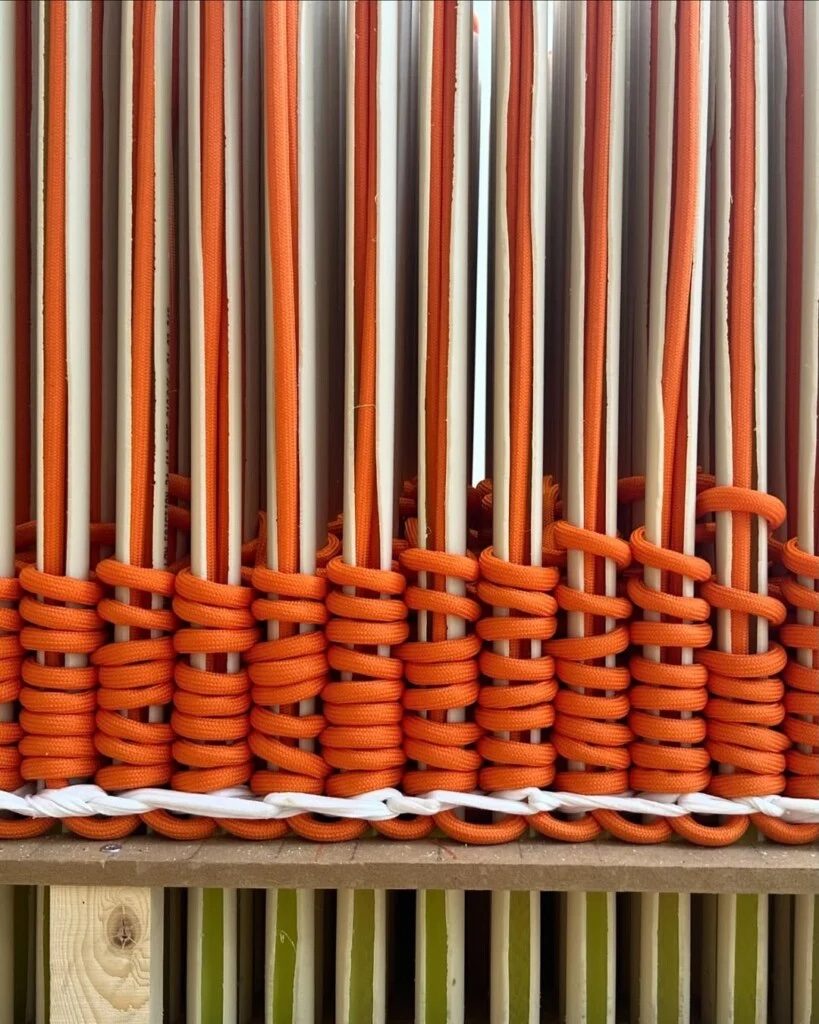
Entwined Objects by Kryss
The Multiweave technique, originally developed by Estonian textile artist Kadi Pajupuu, has been adapted by Tisell for functional furniture design. A specialized weaving tool, consisting of a platform with 345 conduits, guides the rope precisely into position. Once weaving is complete, the conduits are removed, leaving behind a rigid, freestanding form. The tool itself is reusable, enabling consistent and scalable production.
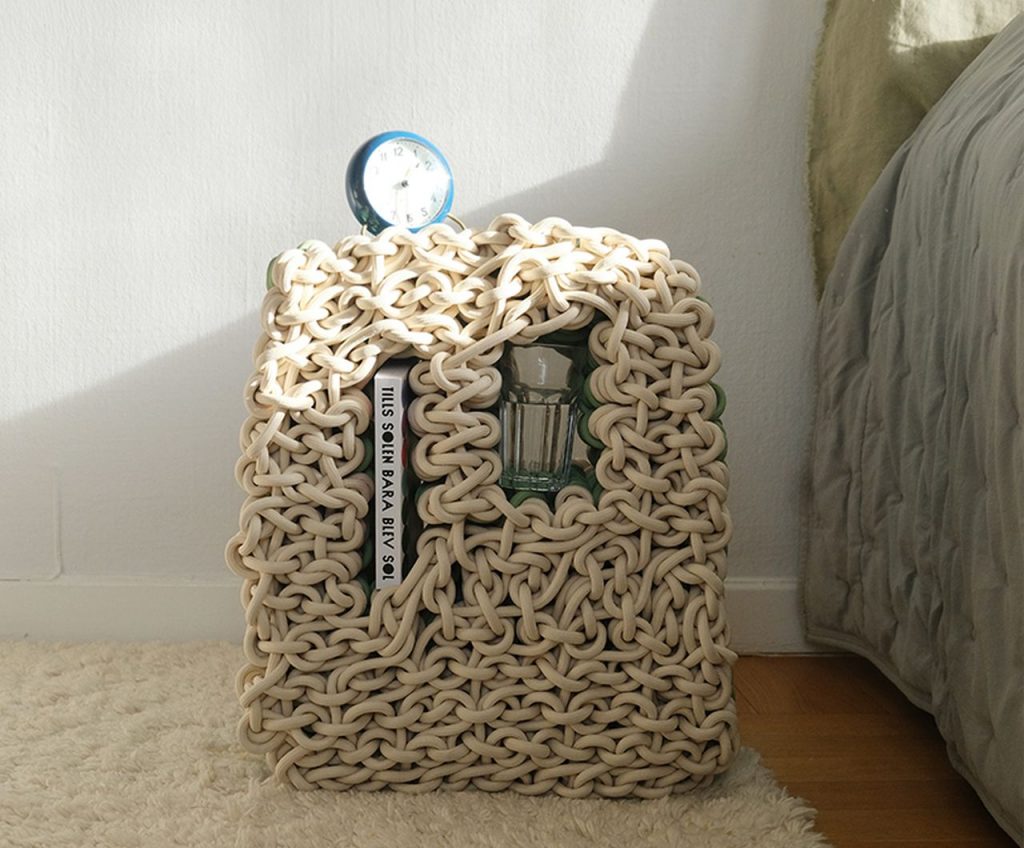
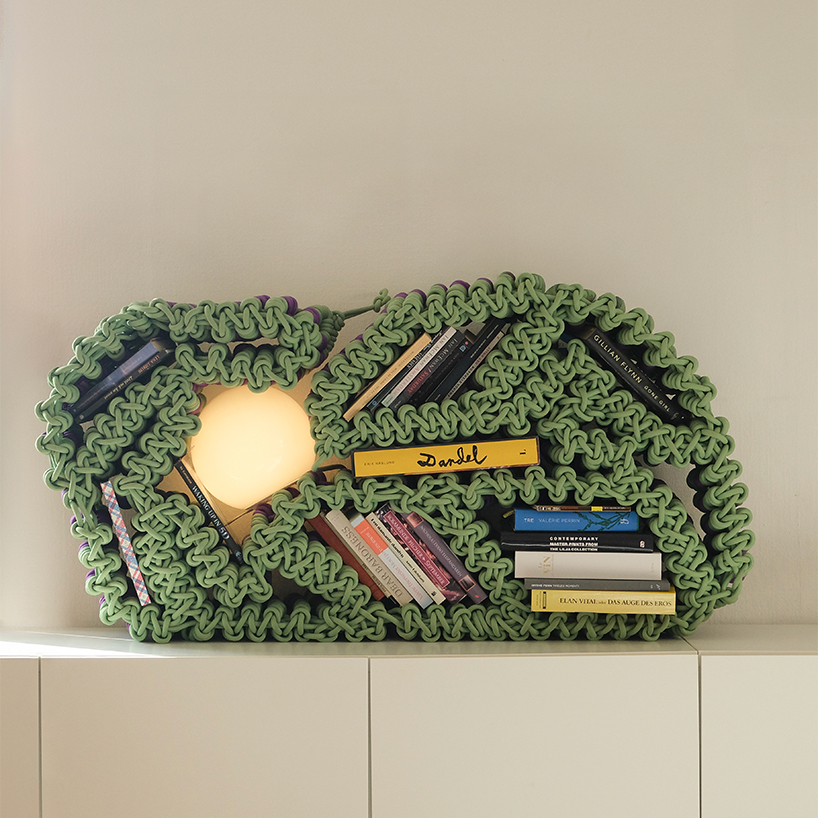
Entwined Objects by Kryss
The project redefines the role of textiles in furniture design, shifting from a decorative or supportive element to a primary structural component. The lounge chair, for example, gradually conforms to the user’s shape, creating a flexible yet stable seating experience. The shelving system subtly reshapes under the weight of objects placed upon it. This approach highlights textiles as dynamic, load-bearing materials, demonstrating new possibilities for adaptable, mono-material furniture.
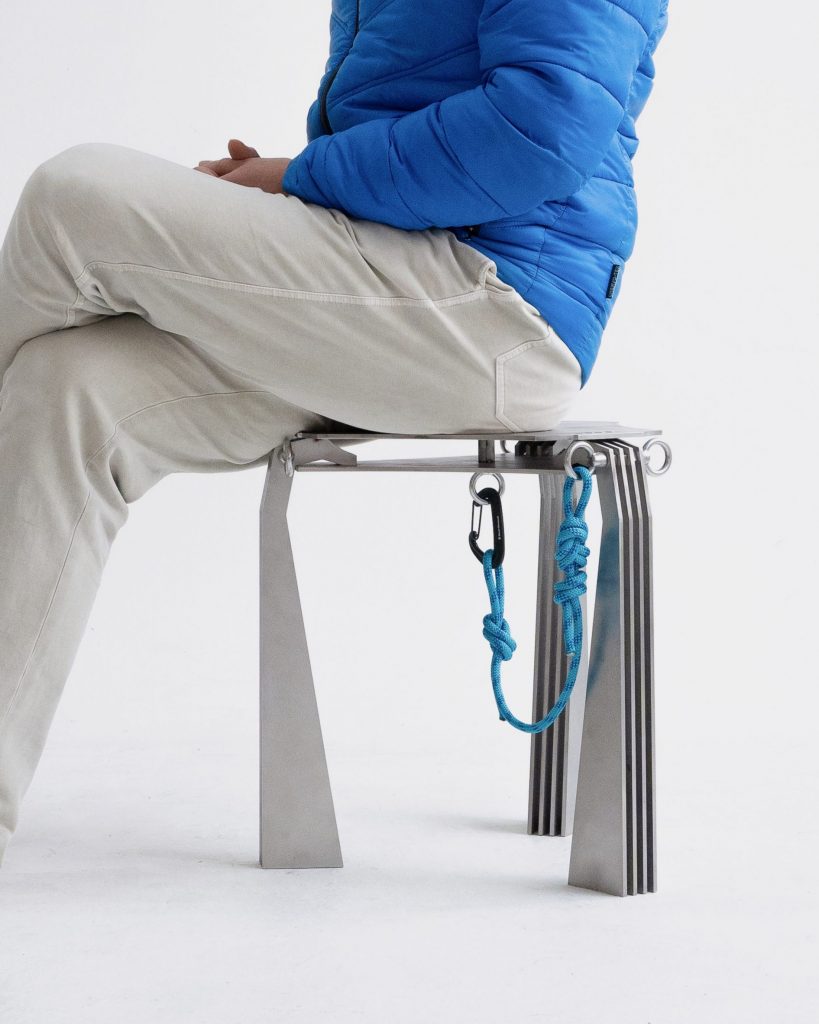
Cling by Junho Kang
Our final design takes a more literal approach to incorporating climbing rope. Junho Kang’s Cling stool draws direct inspiration from the world of rock climbing, featuring a stainless steel construction with a unique carabiner and rope element. The stool is a study in form and function, echoing the spirit of climbing through its design elements.
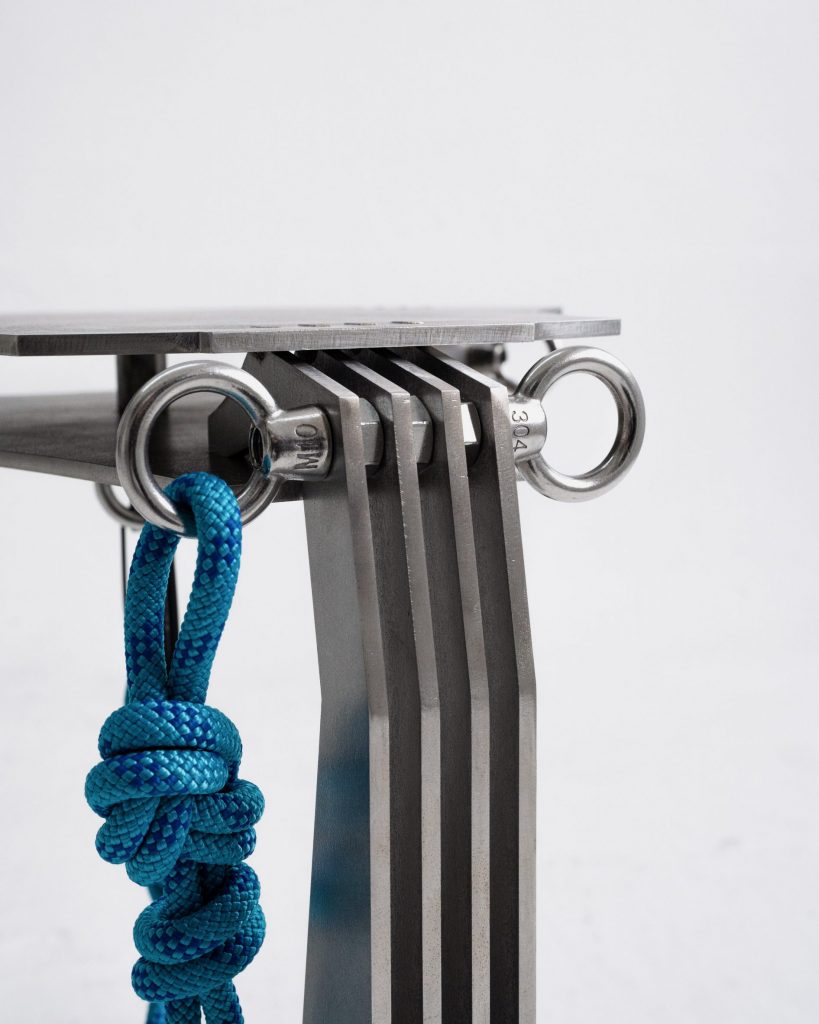
Cling by Junho Kang
The stool features a three-legged base for even weight distribution, with the surface taking on a soft triangular shape with rounded sides. Kang explains that the three legs and their slit styles are inspired by the shape of hands, specifically the way climbers’ fingers bend as they grip rock surfaces. These spaces between the “fingers” are incorporated as a design feature, staying true to the climbing aesthetic.
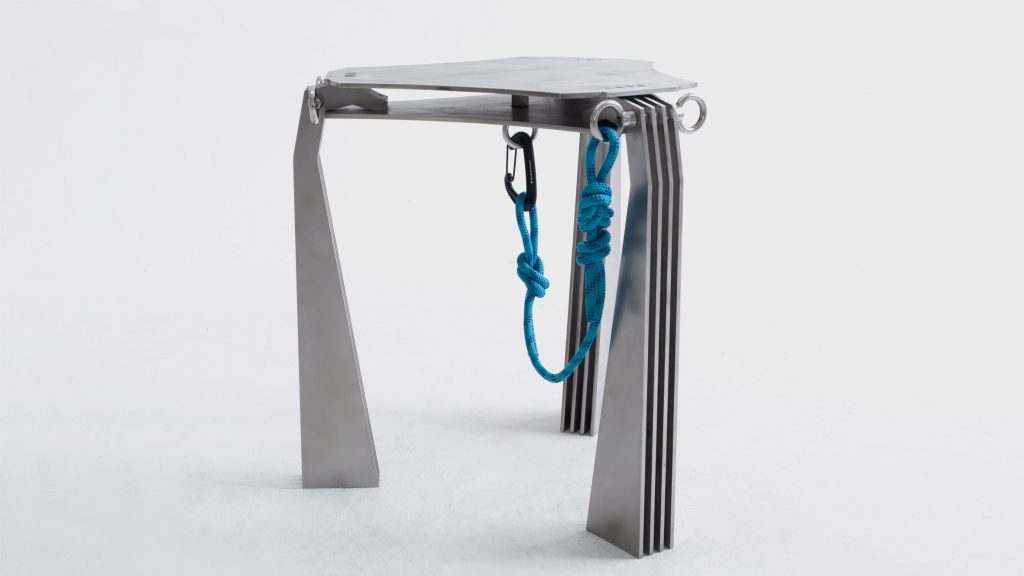
Cling by Junho Kang
The irregular curves and straight lines throughout the stool mimic the varying and natural forms of rock surfaces. Kang uses two plates to form the stool, with the upper and lower surfaces holding the hook of the three legs between them, ensuring stability. Crucially, Kang incorporates climbing elements: two hoops are screwed into each leg for attaching a carabiner and rope. Another hoop, hidden beneath the chair, allows the user to create a “hanger.”

Cling by Junho Kang
By tying the rope around one of the legs’ hoops and clipping the carabiner below, the user can hang objects such as reusable water bottles or books. The multiple hoops encourage users to add more carabiners and ropes, creating a personalized, spider-web-like hanger system. With its steel construction and customizable rope arrangement, Cling directly translates the functionality and aesthetic of rock climbing into a functional and engaging piece of furniture.